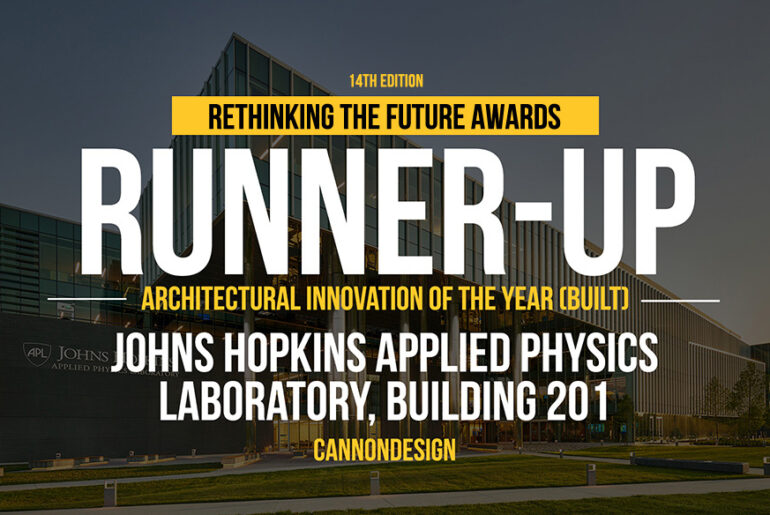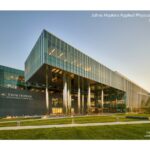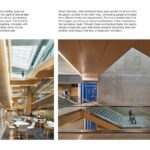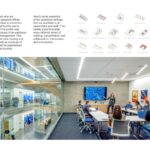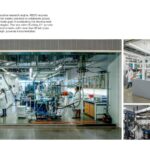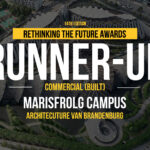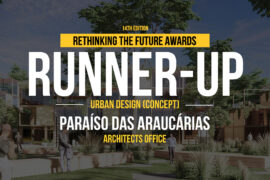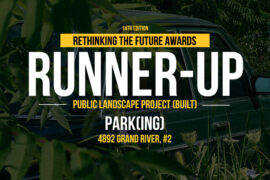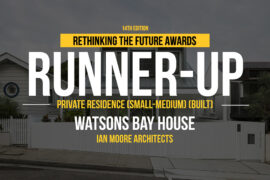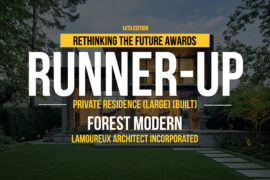Our team designed and built one of the most advanced scientific research laboratories in the United States. The Johns Hopkins Applied Physics Laboratory (APL) Building 201 houses APL’s Research and Exploratory Development Department (REDD), which is recognized as one of the most dynamic and influential research groups in the world. Building 201 facilitates unprecedented collaboration and joint innovation among REDD researchers, which is fueling scientific achievements such as revolutionizing machine intelligence, exploring the outer reaches of the solar system and creating life-saving medical technologies.
Rethinking The Future Awards 2023
Second Award | Architectural Innovation of the year (Built)
Project Name: Johns Hopkins Applied Physics Laboratory, Building 201
Studio Name: CannonDesign
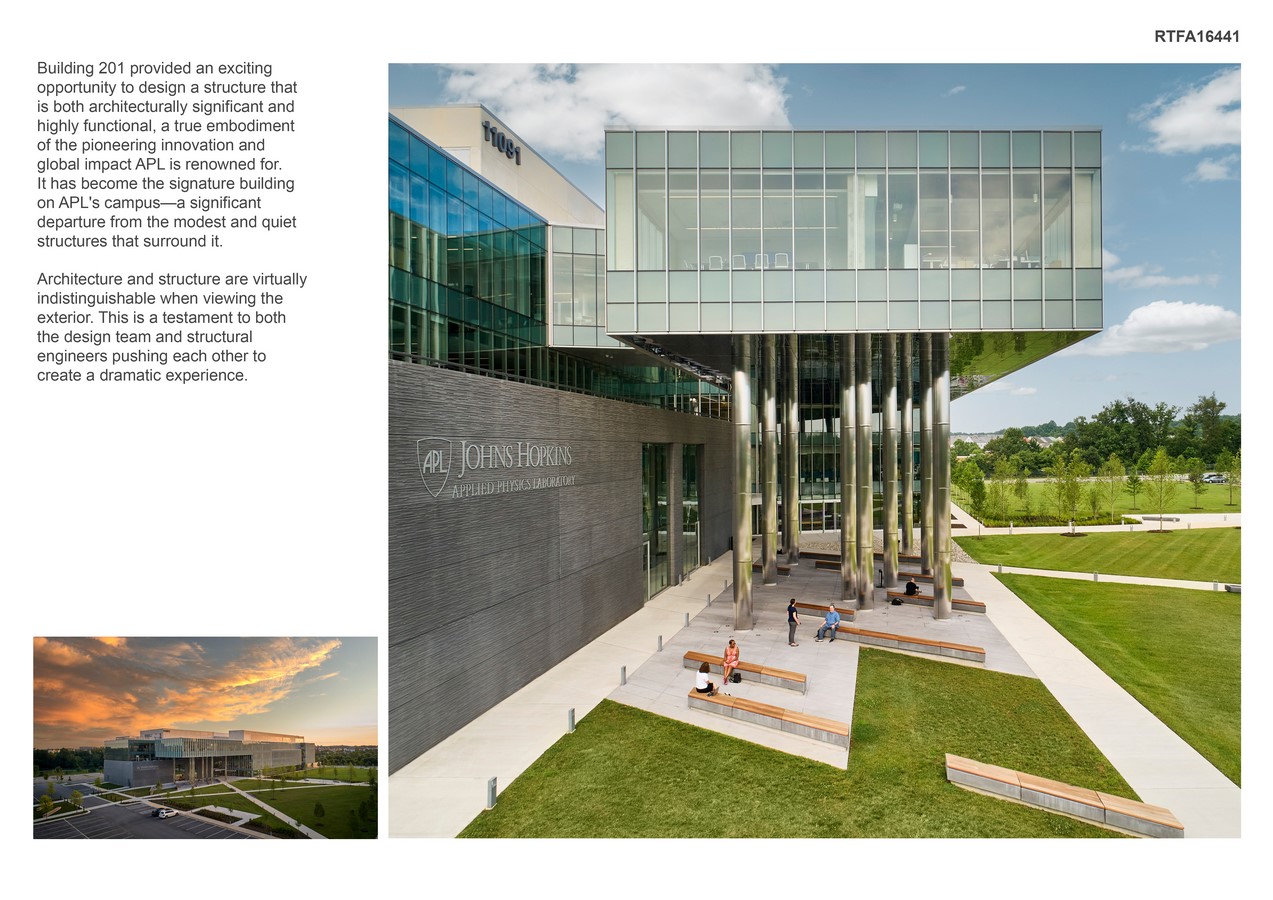
Prior to Building 201, REDD’s teams were spread across the APL campus in 87 independent laboratories located in eight buildings with limited adjacency between departments and labs, and a fragmented structure.

A completely new kind of laboratory and scientific workplace was needed.
In developing the initial feasibility study for Building 201, the project team worked closely with stakeholders from APL’s facilities and real estate team, senior leadership from the lab, and group and
section supervisors from REDD’s 14 groups. Across six months, the team evaluated existing facilities by observing their use and engaging researchers and staff in surveys and workshops. Consistent challenges with the previous lab and workspaces emerged.

TOP CHALLENGES
– limited settings for collaboration
– noise from talking
– reserving meeting rooms
– noise from equipment
– space for ad hoc meetings
– mental fatigue
– access to natural light
Beyond pinpointing challenges, these early research efforts were critical in creating the vision for the new building, which is inspired by REDD’s informal ethos: “We see what everyone sees but think what no one else has thought.”

